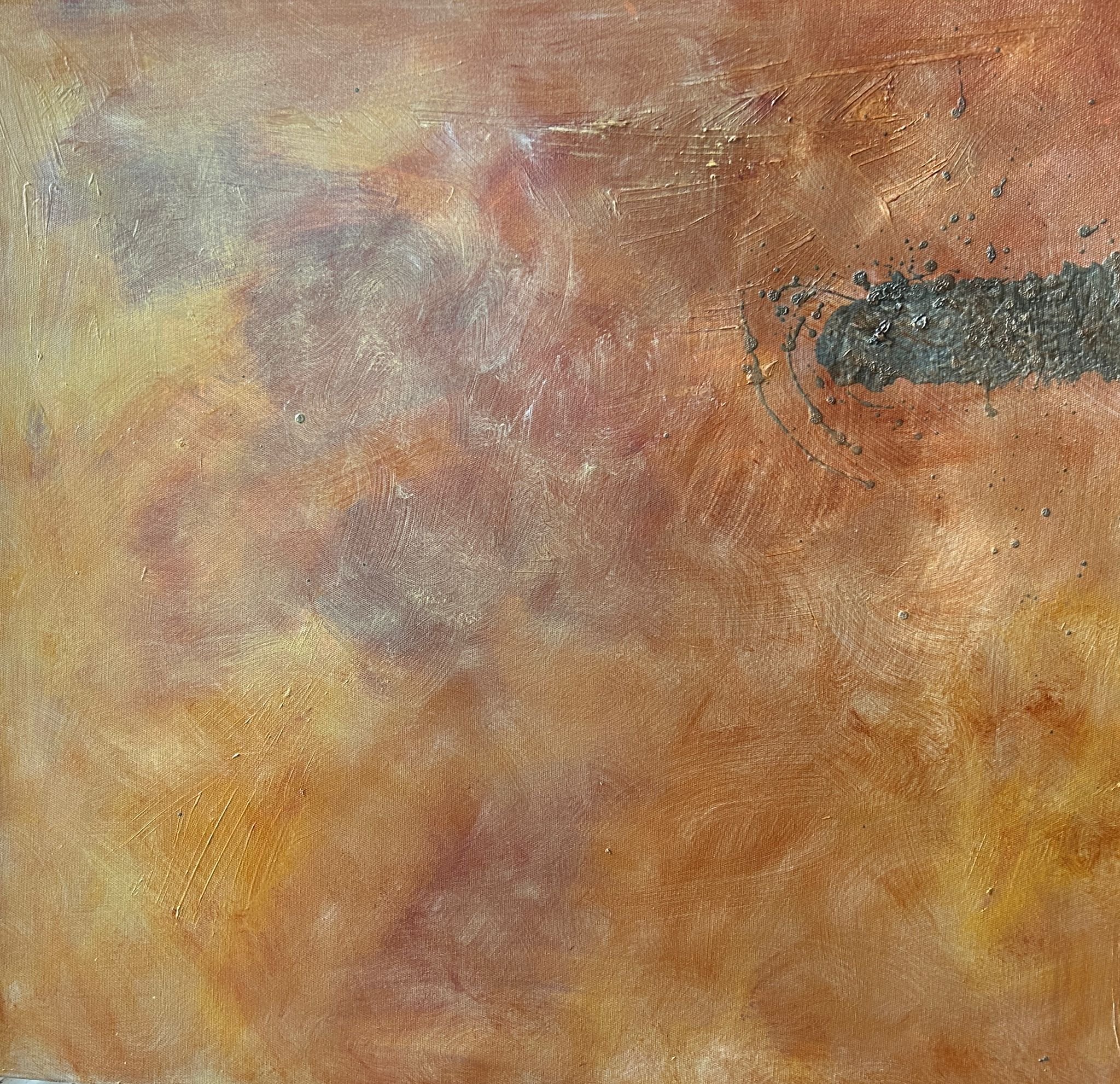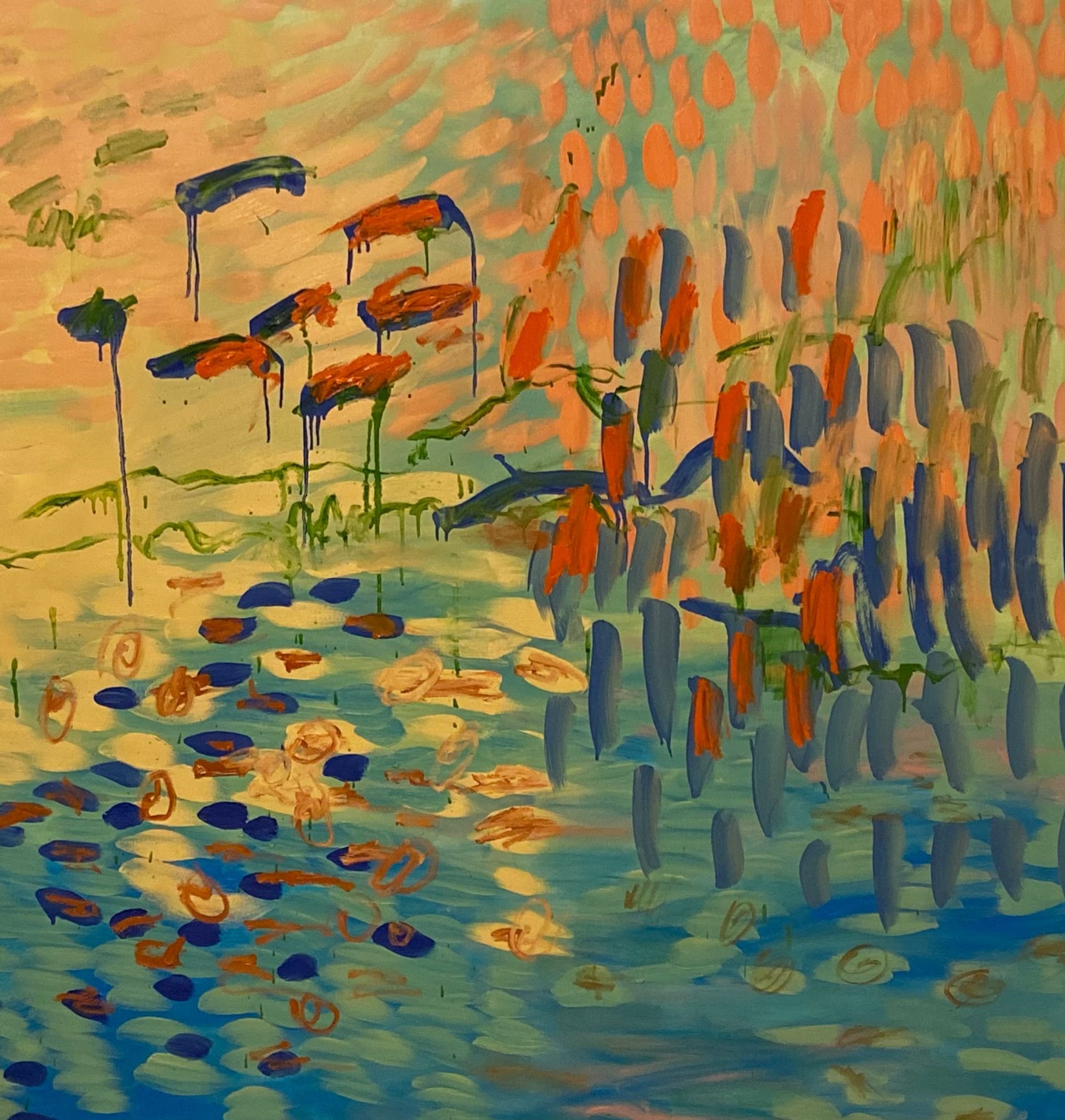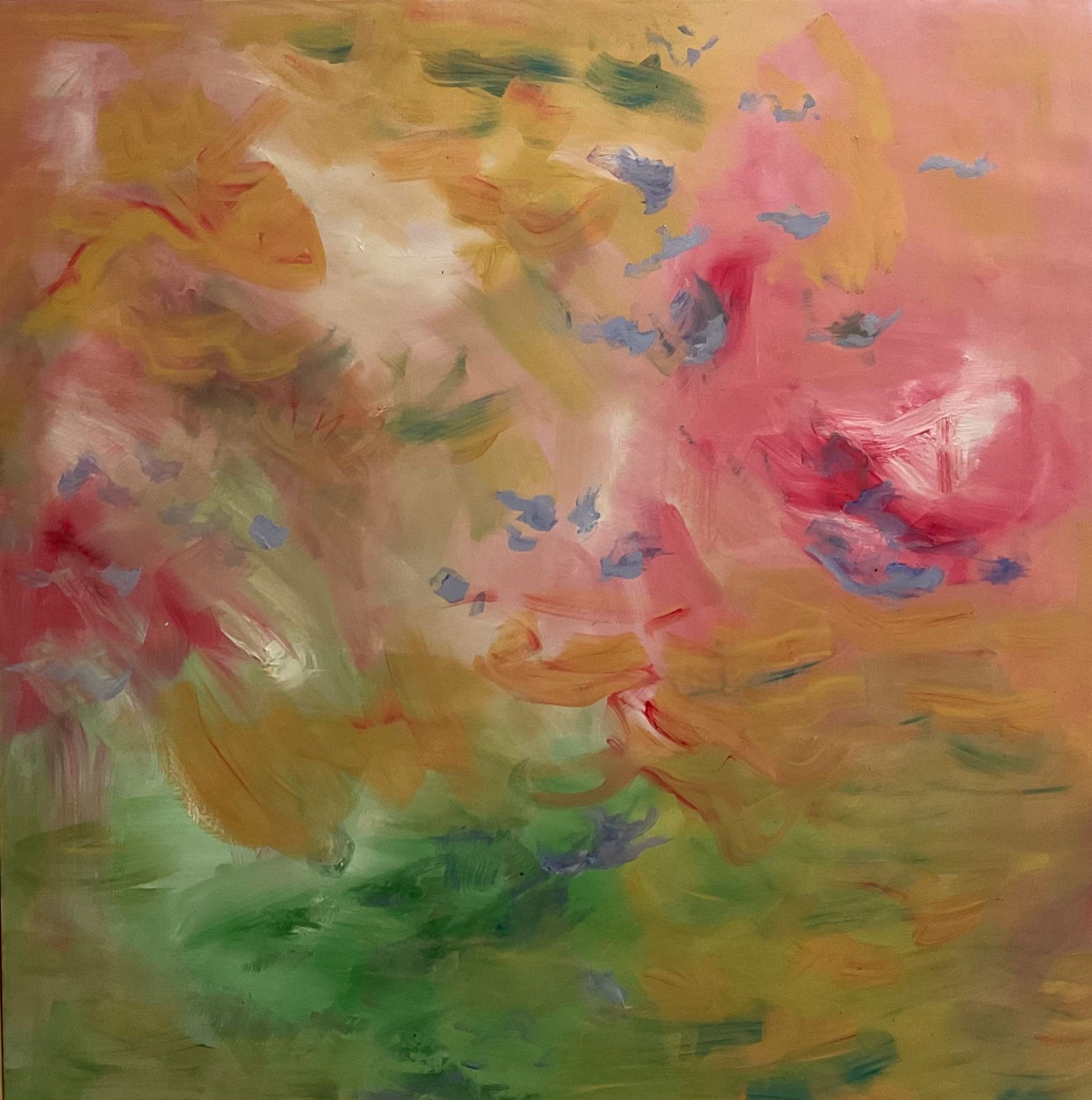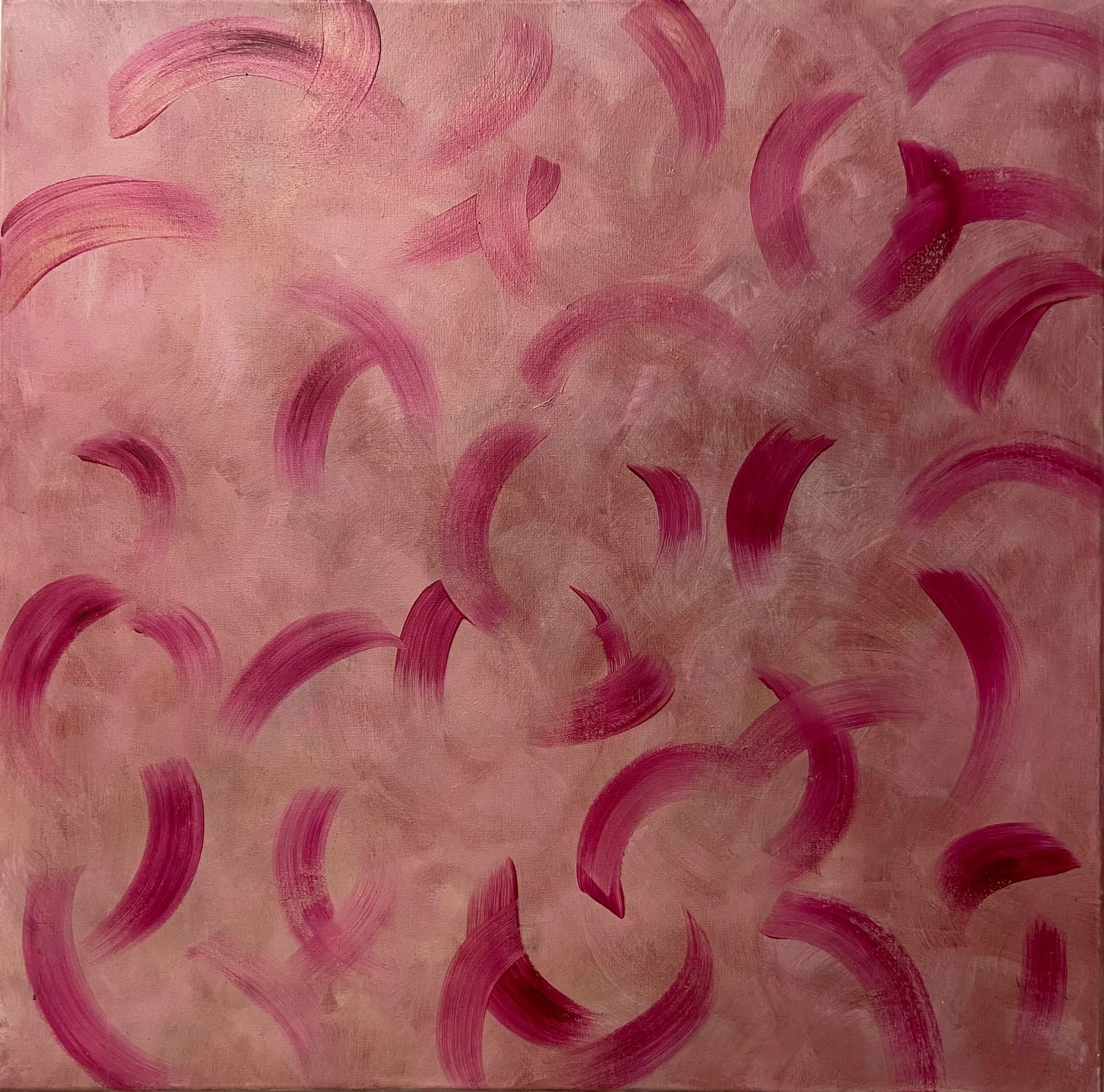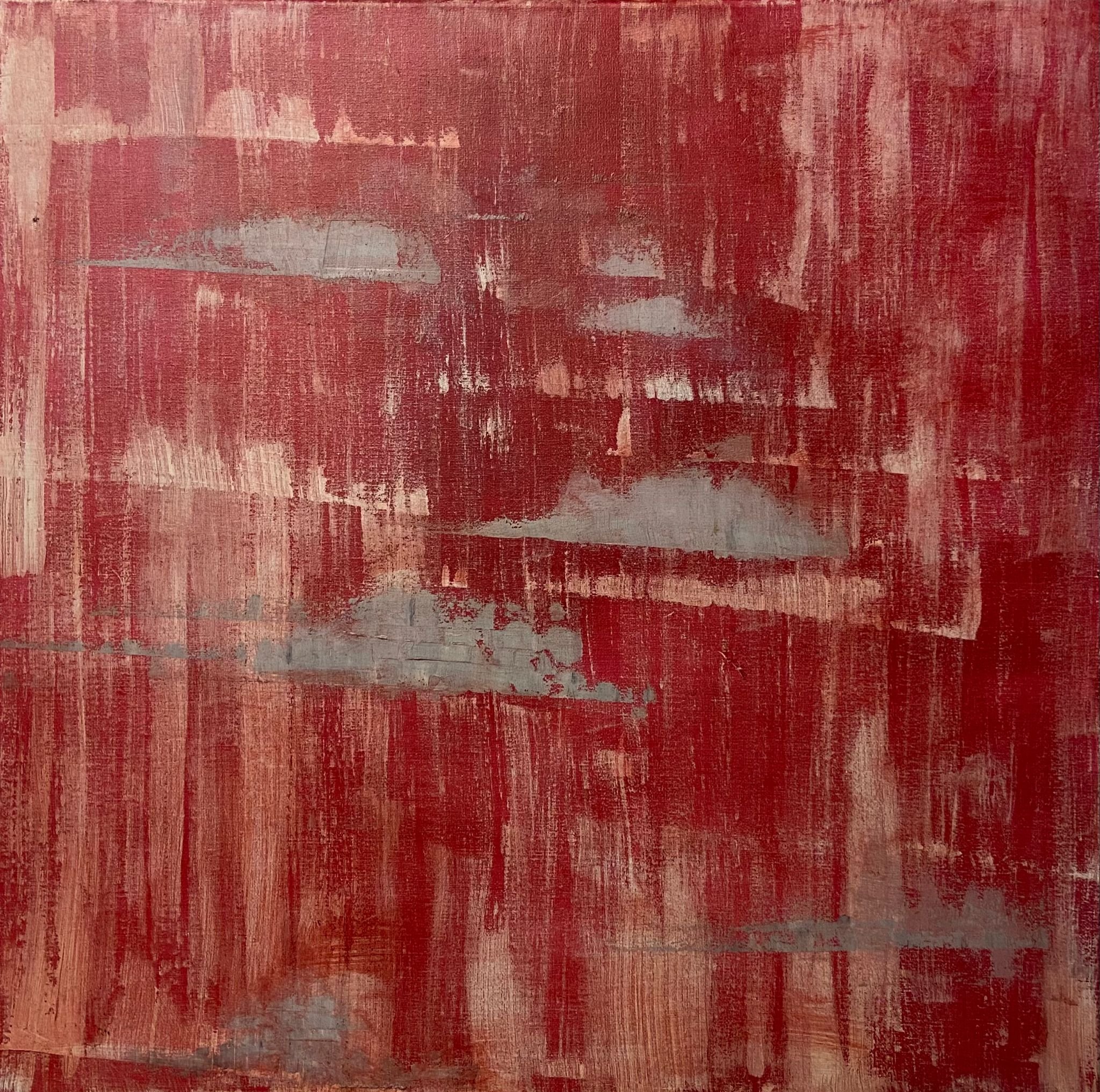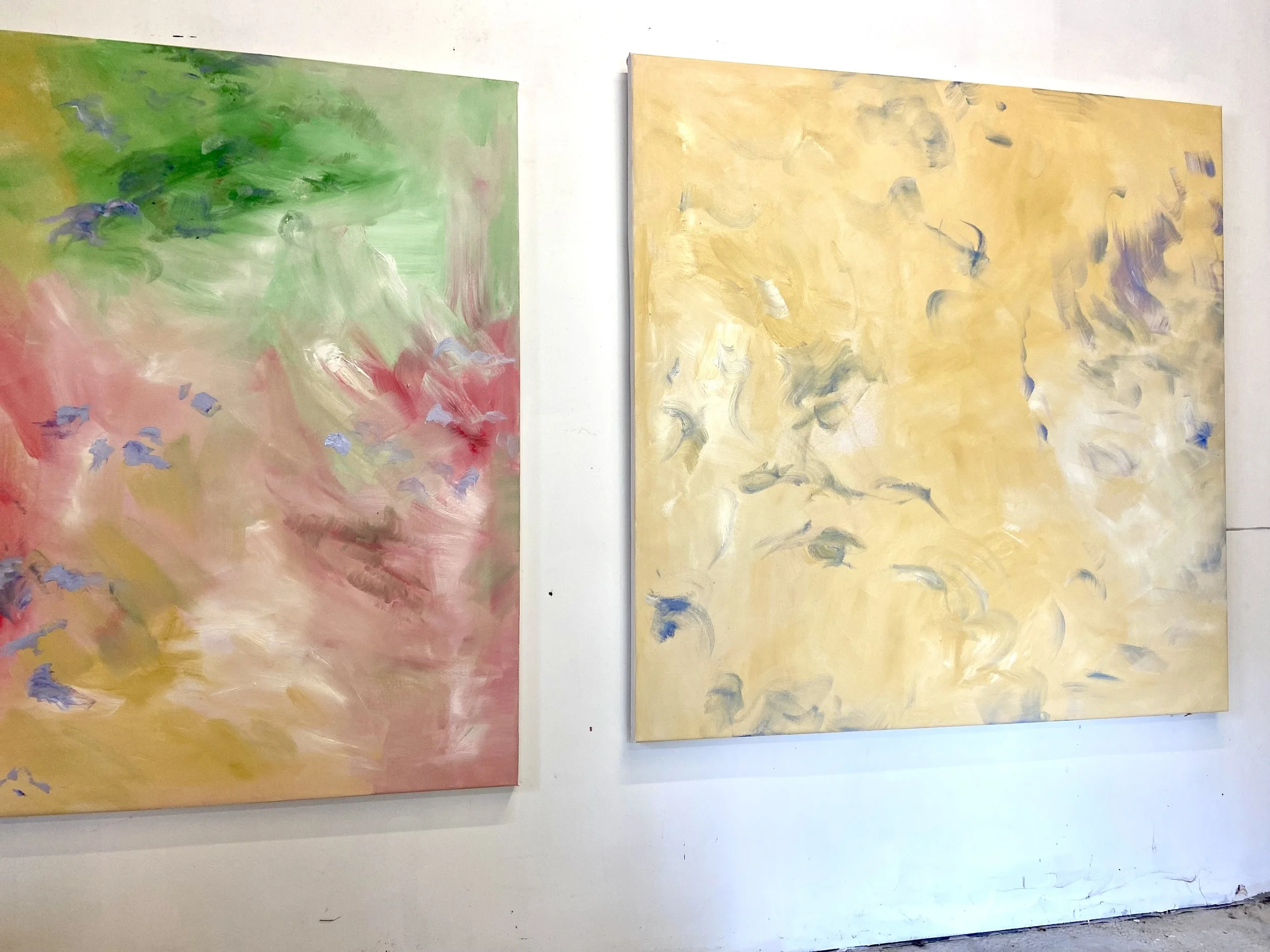warmth
Abstract Landscapes: Light, Form, and Vernacular Aesthetics
This series of abstract landscapes positions itself within a critical dialogue with the history of modernist abstraction, while simultaneously reworking its terms through a consciously vernacular aesthetic. The square format, a structure historically celebrated within high modernism as a symbol of purity and autonomy, is here reinterpreted as a nod to domestic craft traditions — the quilt, the textile, the woven grid. This reframing allows the work to move away from the monumental canvases and heroic gestures associated with the patriarchal legacy of Abstract Expressionism, instead embracing an approach that values intimacy, atmosphere, and sensory perception.
The warm palette of yellows, pinks, and rose tones destabilises the cool rationality often associated with modernist geometry. In these works, colour becomes a site of emotional resonance, recalling the shimmer of light across land while refusing fixed representation. The play of light and hue aligns the practice with the meditative sensibility of Agnes Martin, whose restrained grids invited contemplative experience, while also echoing Eva Hesse’s transformation of fragility and softness into radical aesthetic strategies. The embrace of warmth, delicacy, and ephemerality can be understood as an intervention into the masculinised narratives of abstraction, proposing instead a mode of painting grounded in the relational, the senses, and an embodied presence.
Placed within the broader art-historical discourse, these paintings negotiate a terrain between Lyrical Abstraction, with its emphasis on colour and gesture as emotive language, and Minimalism’s pared-back structures, yet resist the neutrality often claimed by these movements. Instead, they carry forward the feminist re-readings of abstraction advanced in the late twentieth century, where domestic references, craft traditions, and the aesthetics of care became tools for challenging the authority of modernist purity.
Through their shimmering surfaces and quiet insistence on warmth, these works suggest an alternative lineage of abstraction — one that privileges luminosity, perception, and memory, situating the viewer not before the heroic canvas of modernism but within an intimate, re-gendered landscape of light.
